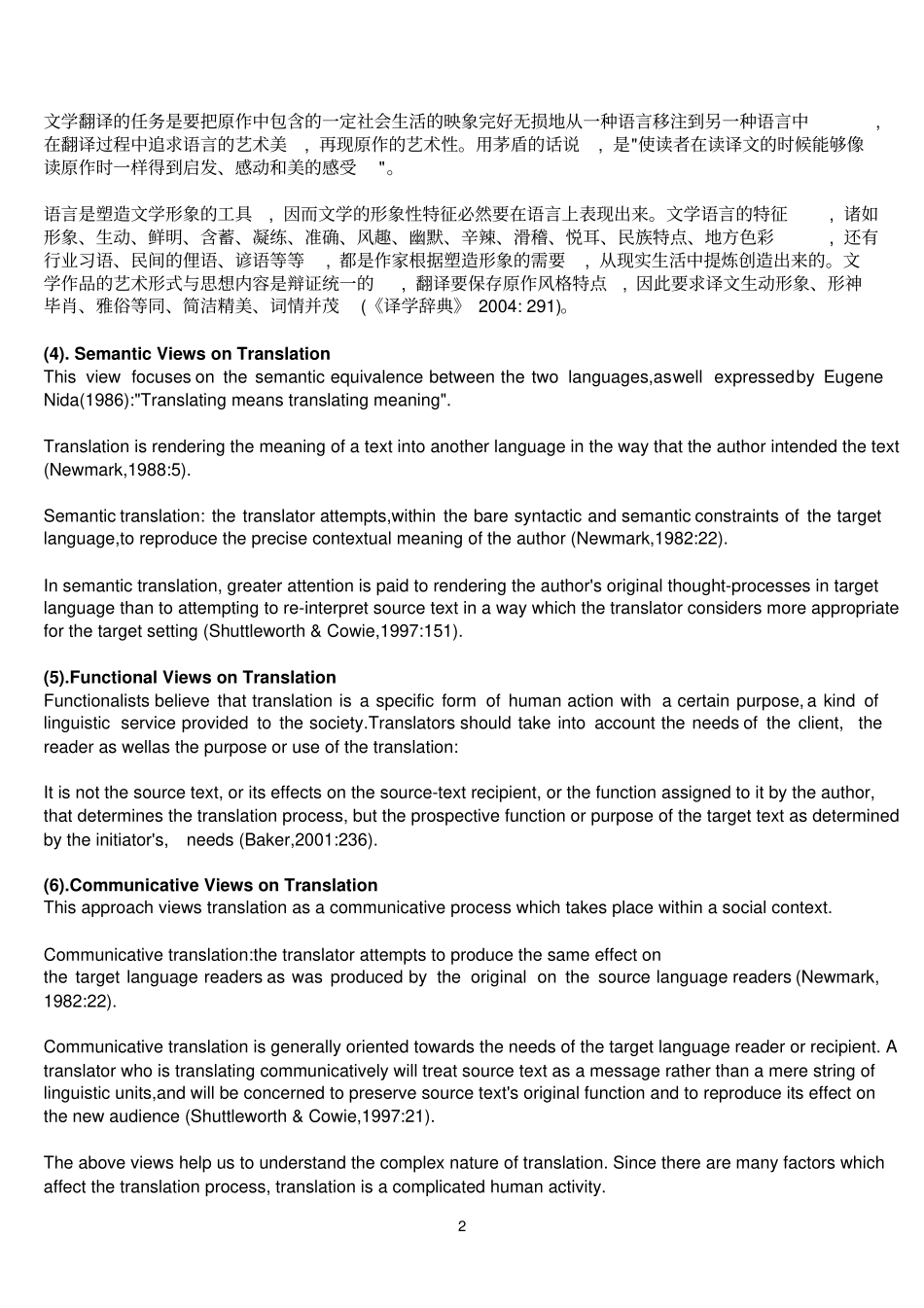1 翻译理论知识概要第一部分:翻译术语1. Definitions of translation Translation can be roughly defined as a reproduction or recreation in one language of what is written or said in another language. Being a very complicated human activity, its whole picture is never easy to describe. Scholars with different academic backgrounds have attempted to define it from various perspectives. (1). Linguistic Views on Translation Translation theorists from the linguistic school conceive of translation as a linguistic activity and some believe that translation theory is a branch of linguistics, approaching the issues of translating primarily from the viewpoint of the linguistic differences between source and target texts. Translation may be defined as the replacement of textual material in one language (the source language) by equivalent textual material in another language (the target language). (Catford, 1965: 20). Translating consists in reproducing in the receptor language the closest natural equivalent of the source-language message, first in terms of meaning and secondly in terms of style. (Nida & Taber,1969:12). Translation theory derives from comparative linguistics, and within linguistics, it is mainly an aspect of semantics; all questions of semantics relate to translation theory. (Newmark, 1982 /1988:5). (2). Cultural Views on Translation In the cultural approach, translation is regarded not only as a transfer of linguistic signs, but also as a communication of cultures, i.e. translation is an "intercultural communication"; hence the terms of "intercultural cooperation", "acculturation", and "transculturation". Translation is a process which occurs between cultures rather than simply between languages {Shuttleworth & Cowie,1997...


